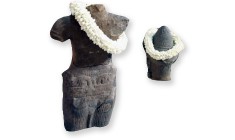Emiline Smith speaking on Chinese-Hong Kong Relations in the Art Trade. Maastricht, 19 March.
18 Mar 2016
Fair and Just Practices: Art and heritage worlds from the perspectives of markets and law, a conference hosted by Maastricht Centre for Arts and Culture, Conservation and Heritage (MACCH) in The Netherlands, will feature a paper by our PhD student, Emiline Smith.
Her paper, entitled, Like a Fish Finding Water: Chinese-Hong Kong Relations in the Art Trade, will be on Sunday, 19 March at 16:15, followed by questions and debate. More information about the location of the conference can be found here.
Abstract
The art market boom of the past decade has surpassed all expectations, with Chinese buyers being the most important group of buyers on the market. Auction houses, shipping agents, dealerships and museums vigorously tailor their services to the Chinese taste. This surge in Chinese art buying power is partly fuelled by the recent opening up of China’s economy. The Cultural Revolution was followed by a period of economic reform. Deng Xiaoping introduced socialism with Chinese characteristics to the nation, which opened China to foreign trade and investment. The 1990s were marked by drastic economic development and the reunification of China through the return of Macau and Hong Kong. The continuing rise of China as a global economic power resulted in a strong increase of materialism and conspicuous consumption in all parts of Chinese society. Therefore, a significant art collection became just another way to display one’s wealth, as was already customary in the Western hemisphere.
Next to this, Chinese buyers have been driven by a nationalist desire to ‘buy their art back’: although Chinese buyers form a majority in almost all categories of art sales, it is Chinese art and antiques that they are particularly interested in. These objects of cultural and aesthetic significance, having been assigned a monetary value, were exported from East to West over several centuries as the result of trade, wars, and increased appreciation of Eastern cultures. The objects looted during the raids on the Old Summer Palace in Beijing by British and French troops are an often-quoted example of the illicit outflow of national cultural heritage. Mainland China maintains legislation ascertaining State ownership of almost all cultural property, and the regulation of trade, import and export of privately owned cultural property. Neighbour Hong Kong does not provide clear legislation or policy on state/private ownership, trade, export and import of cultural property. The border between China and Hong Kong has been prone to a variety of cross-border criminal activities because of the dichotomies between the two nations’ legal systems. Cultural property is one of the commodities known to often be smuggled from mainland China into Hong Kong. Transporting an illegally excavated object out of China into Hong Kong offers the distributor from there the ability to conceal the object’s true origin and export the object to anywhere in the world with the necessary papers and a newly acquired ‘legal’ status, which often increases the value of the object and price paid. Hong Kong is therefore often classified not only as a market country, but also as a so-called ‘transition portal’ for cultural property.
This paper will assess the symbiotic relationship of China and Hong Kong within the art trade. It will draw upon the author’s doctoral fieldwork in Asia, Europe, and North America. This paper indicates that cultural property has been overlooked, despite the two countries synchronising their legislations and law enforcement strategies in almost all other areas of cross-border crime. Moreover, the fundamental component that renders illicit trafficking successful, in this case the transit phase of a cultural object, is under-researched. Hong Kong is taken as an example to assess what variables contribute to Hong Kong’s status as a transition portal, and what implications this has for the regional and global trade in cultural property.
